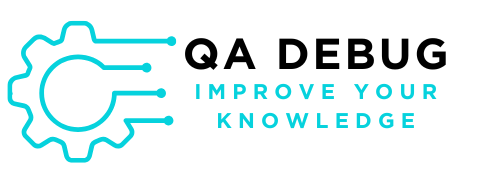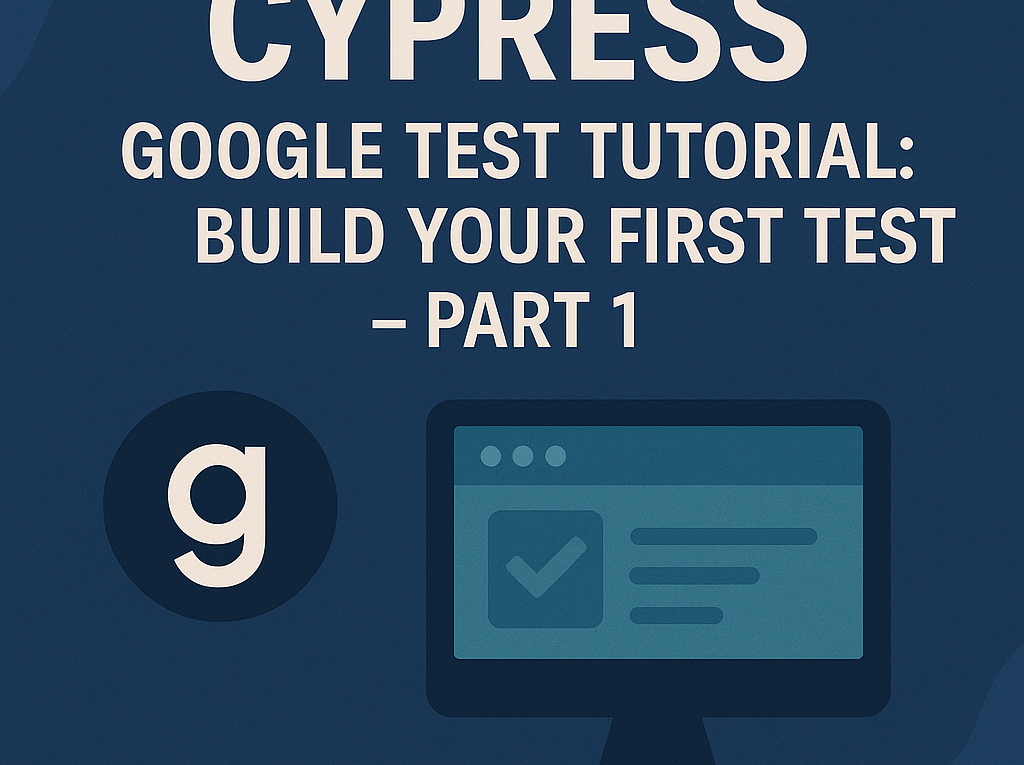Cypress Google Test Tutorial: Build Your First Test
Are you ready to start testing with Cypress? In this guide, we’ll create a simple test that uses Google to search for a real website, navigate to it, and handle common website elements. You’ll learn how to set up a test file, interact with search engines, and validate website elements – all using Cypress testing framework.
Setting Up Your First Cypress Test File
To begin, let’s create a new test file in your project. First, navigate to your Cypress project folder. Then, follow these steps:
- Open the
cypress/e2efolder - Create a new file named
qadebug-search.cy.js - Open this file in your editor
Every Cypress test needs a basic structure. Copy this starter code to your file:
describe('QA Debug Website Test', () => {
it('searches for QA Debug on Google and validates the site', () => {
// Test steps will go here
})
})The describe block groups related tests, while each it block represents a single test case. This structure helps organize your Cypress tests logically.
Writing Your Google Search and Site Navigation Test
Now let’s add actual test steps. Our Cypress test will:
- Visit Google.com
- Handle any cookie consent dialogs
- Search for “QA Debug”
- Click on the QA Debug website link
- Handle cookie notices on the QA Debug site
Opening Google Website
First, we need to visit Google:
describe('QA Debug Website Test', () => {
it('searches for QA Debug on Google and validates the site', () => {
// Visit Google
cy.visit('https://www.google.com')
// More steps will come next
})
})When you run this Cypress test, it will open Google in the test browser. However, you’ll likely see a cookie consent dialog that we need to handle.
Handling Google Cookie Consent Forms
Google typically shows a cookie consent form. Therefore, we need to dismiss it before continuing our Cypress test:
// Accept cookies if the dialog appears
cy.get('button').contains('Accept all').then($button => {
if ($button.length > 0) {
cy.wrap($button).click()
}
})This code looks for an “Accept all” button and clicks it if found. As a result, we can continue with our Cypress testing without interruptions.
Searching for QA Debug
Next, let’s search for “QA Debug”:
// Type our search term
cy.get('input[name="q"]').type('QA Debug')The cy.get() command finds elements on the page. In this case, we’re finding Google’s search input box and typing our search term.
Submitting the Search
After typing our search term, we need to press Enter:
// Press Enter to search
cy.get('input[name="q"]').type('{enter}')Clicking on the QA Debug Website
Now, we need to find and click on the QA Debug website link in the search results:
// Click on QA Debug link
cy.contains('https://qadebug.com').click()This finds the text matching the QA Debug URL and clicks on it. Consequently, Cypress will navigate to the QA Debug website.
Handling Cookie Notice on QA Debug
Once we’re on the QA Debug website, we might see a cookie consent modal. Let’s handle it:
// Handle cookie notice on QA Debug if it appears
cy.get('body').then($body => {
// Check if the privacy notice modal is visible
if ($body.find('div.cky-consent-container.cky-box-bottom-left').length > 0) {
// Check if it has the expected title
cy.contains('We value your privacy').should('be.visible')
// Click the "Accept All" button
cy.get('body > div.cky-consent-container.cky-box-bottom-left > div > div > div > div.cky-notice-btn-wrapper > button.cky-btn.cky-btn-accept').click({force: true})
}
})This code first checks if the cookie notice exists, then verifies its title, and finally clicks the “Accept All” button. Furthermore, we use {force: true} to ensure the click works even if the element might be covered by something else.
The Complete Cypress Test for Google Search and QA Debug
Here’s our complete Cypress test:
describe('QA Debug Website Test', () => {
it('searches for QA Debug on Google and validates the site', () => {
// Visit Google
cy.visit('https://www.google.com')
// Accept cookies if the dialog appears
cy.get('button').contains('Accept all').then($button => {
if ($button.length > 0) {
cy.wrap($button).click()
}
})
// Type our search term
cy.get('input[name="q"]').type('QA Debug')
// Press Enter to search
cy.get('input[name="q"]').type('{enter}')
// Click on QA Debug link
cy.contains('https://qadebug.com').click()
// Handle cookie notice on QA Debug if it appears
cy.get('body').then($body => {
// Check if the privacy notice modal is visible
if ($body.find('div.cky-consent-container.cky-box-bottom-left').length > 0) {
// Check if it has the expected title
cy.contains('We value your privacy').should('be.visible')
// Click the "Accept All" button
cy.get('body > div.cky-consent-container.cky-box-bottom-left > div > div > div > div.cky-notice-btn-wrapper > button.cky-btn.cky-btn-accept').click({force: true})
}
})
// Verify we're on the QA Debug site
cy.url().should('include', 'qadebug.com')
})
})Adding More Validations
Let’s add more validations to ensure we’re on the right page:
// Additional validations for QA Debug site
cy.url().should('include', 'qadebug.com')
cy.title().should('contain', 'QA Debug')
cy.get('header').should('be.visible')These checks verify the URL, title, and presence of a header element on the page. As a result, we can be confident our test is working correctly.
Related Cypress Articles
Want to learn more about Cypress testing? Check out these related articles:
- Introduction to Cypress Testing Framework
- Getting Started with Cypress: Installation Guide
- Configuring Cypress for Effective Web Testing
- Running and Debugging Cypress Tests (coming soon!)
In part two of this tutorial, we’ll cover how to run your test using the Cypress Test Runner, understand key Cypress commands, and troubleshoot common issues.
Ready to continue your Cypress journey? Let’s keep building your testing skills!

